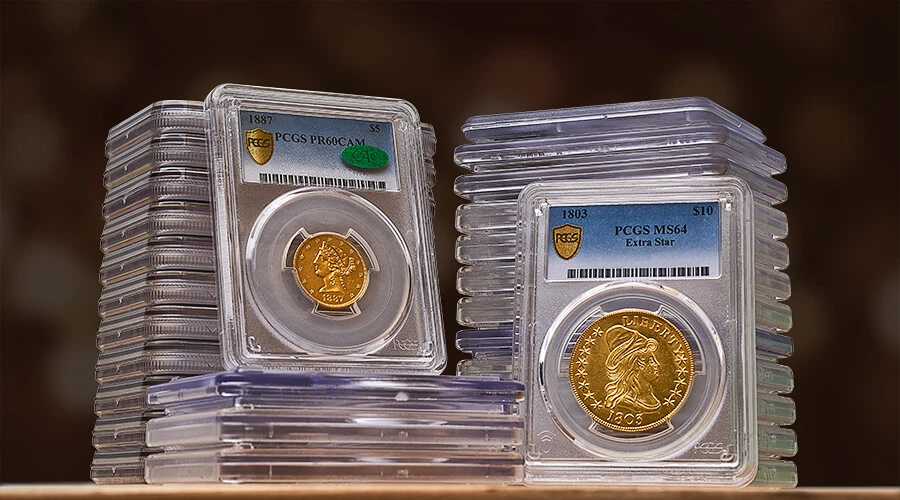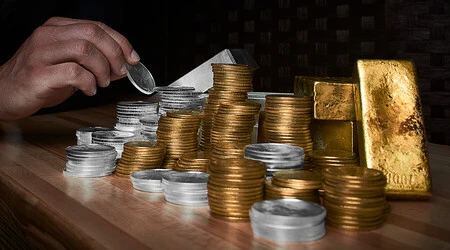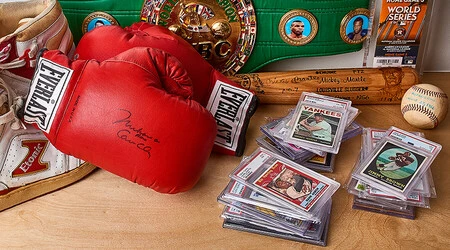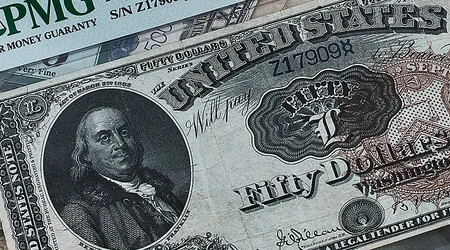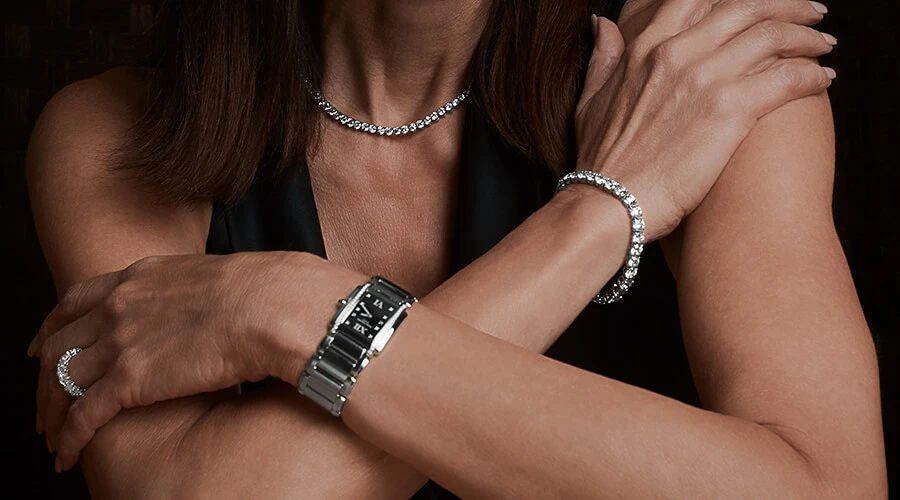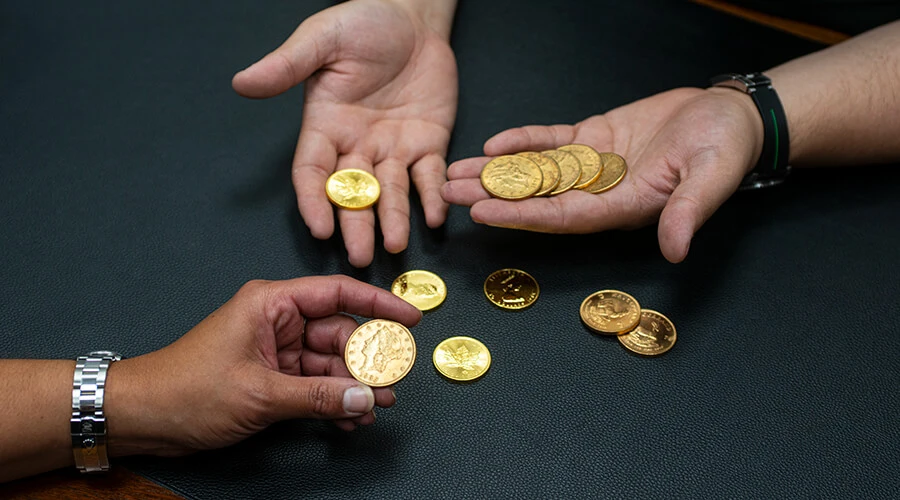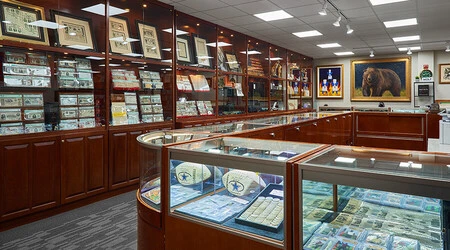The “Winged Liberty Dime” released in 1916 has been described as one of the most beautifully crafted dimes coined by the U.S. Mint. Created by sculptor Adolph A. Weinman, the introduction prompted nearly universal praise from the coin collecting community and his designs were instantly recognized as brilliant. So why do we know this historic coin today as the Mercury Dime and why is the beautiful Lady liberty often confused with the male Greek God Mercury?
In 1916, a new dime design was introduced to replace the old, often seen as stodgy, Barber design that had been in use since 1892. Charles E. Barber was the sixth Chief Engraver of the United States Mint from 1879 until his death in 1917. Although Barber's coins were often met with mixed reviews, he had a long and fruitful career in coinage, designing most of the coins used at the mint during his time as Chief Engraver. The new era coin designed by Weinman featured artwork depicting the mythological goddess Liberty wearing a Phrygian cap. That is likely where the confusion begins.
The Design of the Mercury Dime
The Phrygian cap is a soft conical cap with the top pulled forward. In early modern Europe, it came to signify freedom and the pursuit of liberty and is sometimes called a liberty cap. It is often used in artistic representations to signify freedom and the pursuit of liberty. The addition of the wings was intended to symbolize, by Weiman’s own words, “freedom of thought.” This cap became confused with Mercury’s Pileus cap. The pileus was a brimless, felt cap worn in Ancient Greece and surrounding regions, later also introduced in Ancient Rome. This was the cap mostly depicted with the mythological God Mercury. At a quick glance, it was easy to see the confusion; the public saw the new dime’s resemblance and assumed it was Mercury, so the coin quickly became known popularly as the "Mercury Head" Dime.
Another factor could be that the reverse (back) blends a Roman fasces (ax surrounded by a tied bundle of sticks) and an olive branch, which Weinman intended to indicate America's military readiness but also their desire for peace. This would have reinforced the Roman connection and helped with the misnomer of the Obverse (heads) side of the coin. Plus at the wondrous 1915 San Francisco Panama Pacific World’s fair, which Weinman attended, the official medal featured Mercury, so the public, and maybe even Weinman, had mercury on their minds.
Whether you prefer calling this coin a Winged Liberty Head dime or a Mercury dime, we do know that Weinman never intended his design for the obverse of the new dime to represent Mercury. It has been said that he modeled his Liberty head after Elsie Kachel Stevens, the young wife of poet Wallace Stevens. History tells us that Wallace and Elsie Stevens rented rooms in a house owned by Weinman. The artist-sculptor asked Elsie to pose for a sculpture bust sometime around 1913 to which she agreed. Weinman is said to have used his bust of Elsie as a model for the dime when he began designing it in 1915. If you look at a profile photograph of the bust, it shows the obvious inspiration for the dime.
Weinman's dime was issued during the renaissance of U.S. coinage design, which began in 1907 and 1908 with the new gold designs; continued in 1913 with the Indian Head 5-cent coin; reached its zenith in 1916 with stunning new designs for the dime, quarter dollar and half dollar; and ended in 1921 with the introduction of the Peace dollar.
It is truly remarkable that a coin this small could have such an intricate and aesthetically pleasing design. The Mercury Head Dime series is one of the most popular in all of American numismatics. Apart from the 1916-D and 1942 overdates, most dates are obtained with little difficulty. However, several of the dates are extremely rare in high grades. The most desirable issues are those with Full Split Bands on the reverse, which means all of the bands that hold the fasces together on the reverse must be clearly and completely separated. While much attention is focused on the central bands, the bands on the ends of the fasces must be separated, as well.
The Winged Liberty Head dime represented a welcome change of pace when it made its first appearance in 1916. Indeed, it served to symbolize more than freedom of thought: it also was a symbol of America's new spirit, an exuberance reflected in the freshness and vitality of the new U.S. coinage as a whole in the early 1900s. In an artistic sense, this new coin was a breath of fresh air.
Plus, the Mercury dime served Americans well during one of this nation's most turbulent eras. Born on the eve of our nation's entry into World War I, it remained an integral part of America's coinage lineup right through the end of World War II, bowing out in 1945. Along the way, it took center stage during the Great Depression as the title coin in the down-and-outers' anthem, "Brother, Can You Spare a Dime?" Even in its final years, this was a coin with real buying power. Armed with a Mercury dime, youngsters in the1940s had their choice of a comic book, a double-dip ice cream cone, two Hershey bars, or two bottles of Coca-Cola.
In 2016, America will be celebrating the 100th anniversary of this coin, not only for its beauty but also for the important part it played in numismatic history.












